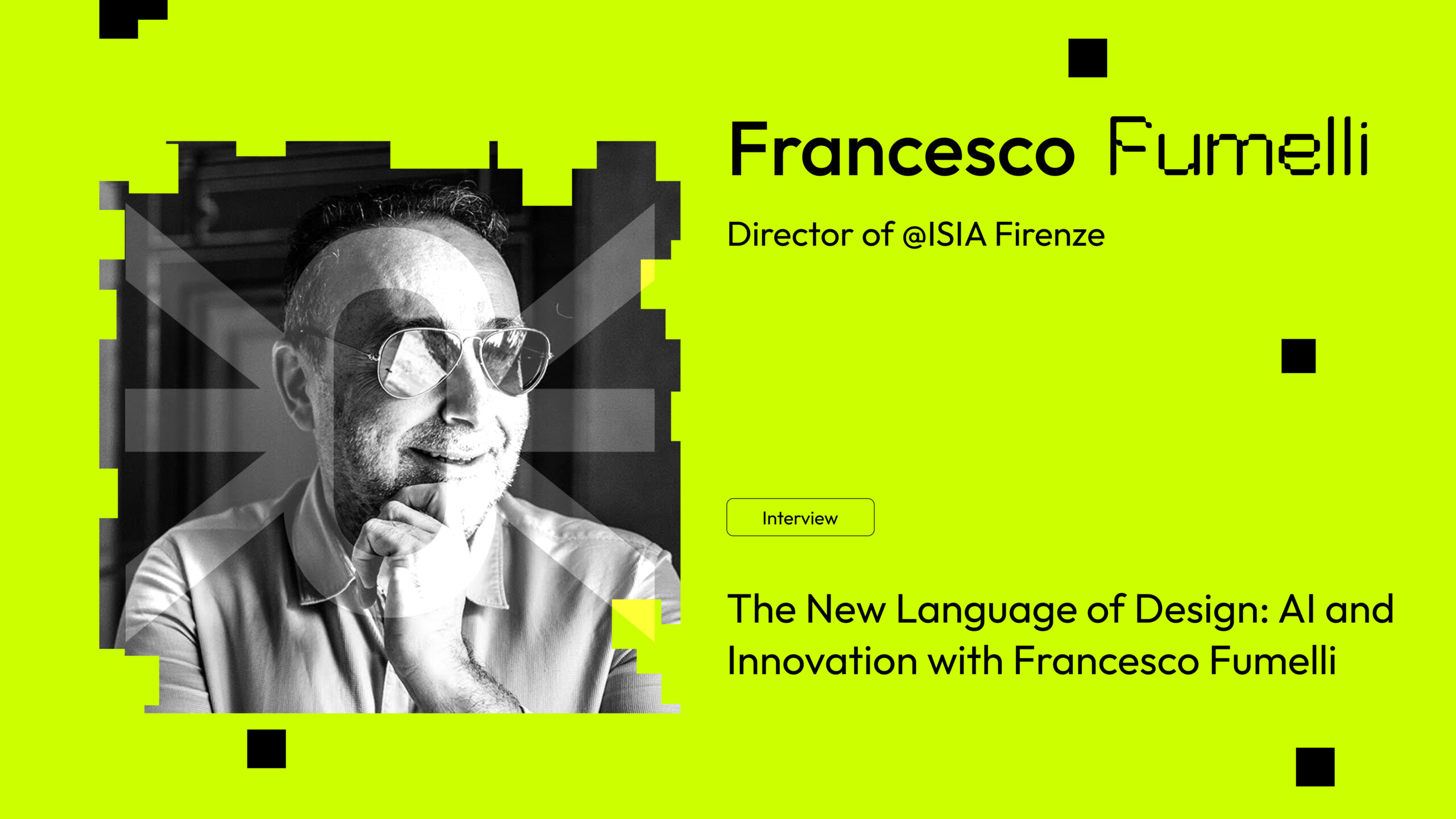The New Language of Design: AI and Innovation with Francesco Fumelli

Aracne’s interviews are back, curated by Francesco Cerisano. In this edition, we feature an insightful discussion with Prof. Francesco Fumelli, Director of ISIA Firenze and President of the Conference of ISIA Presidents and Directors in Italy. With his vast experience in design and communication, Fumelli has led several transformations in education and research, always focusing on technological innovation and sustainability. In the interview, we delve into the challenges and opportunities that artificial intelligence presents to the design and fashion sectors, along with the essential skills future designers need to thrive.
Can you tell us a bit about yourself and your professional background?
I graduated from ISIA Florence in the late 1990s with one of the first theses on communication design. Even before that, I had co-founded a digital communication and consulting agency with three partners. I continued my consulting and planning work through the agency (and my own business) while also teaching at ISIA, LABA, and the Academy of Fine Arts in Florence. This continued until 2016, when the then-director, Prof. Furlanis, invited me to take on the role of Deputy Director. From that point on, directing the institution and teaching basic design became my full-time commitments.
What are the main challenges and rewards in your role as Director at ISIA Florence?
Directing an institution is demanding; it’s a continuous challenge that leaves little room for anything else. It involves constant interaction with diverse realities: students, faculty, the ministry, and regulations. The post-COVID years have seen a massive acceleration in regulations, new master’s programs, PhDs, revisions of disciplinary sectors, and recruitment rules—just a few of the ongoing challenges during this period. It’s an ongoing commitment, which also extends to my role as President of the ISIA Presidents and Directors Conference. Our mission is to help grow this sector. ISIAs are relatively small institutions that achieve significant results, and we must strive to make them more active, operational, visible, and valued.
How do you see the evolution of industrial design and communication in recent years, and what role does artificial intelligence play in this transformation?
Recent developments in industrial design, communication, and design in general have shown a greater focus on sustainability, functional minimalism, and the use of innovative materials. The integration of smart technologies has enhanced user experiences. In this context, artificial intelligence plays a crucial role by optimizing design processes, fostering innovative ideas, improving data analysis, and enabling more targeted communication and production. This leads to a more efficient, sustainable, and user-centric approach where technology and creativity blend to create innovative solutions—what else is design, if not that?
Could you share an example of a research or meta-design project you developed with students at ISIA Florence that you find particularly innovative?
I teach basic design, a foundational course that introduces students to a design-oriented way of thinking, during the first year of the undergraduate program. We don’t do actual design projects but rather focus on meta-design, so I’m not really in a position to answer this question. However, as a director, I support and encourage all design ideas that bring innovation in terms of processes or products, always aiming for full sustainability.
How do you collaborate with local and international industries to align academic research with market needs?
ISIA has always positioned itself as a research-focused institution, evident from its active collaborations, established master’s programs, and those in development, as well as its partnerships with companies, organizations, and research foundations. These collaborations aim to achieve tangible project goals through practical research.
How do you think artificial intelligence could revolutionize the field of fashion design, and what are the potential challenges?
Artificial intelligence can be—if used correctly—a great “process enhancer” and “opportunity multiplier.” Its ability to support research and facilitate connections makes it an excellent meta-design tool. What’s crucial about AI is its potential to be a flexible tool that supports human knowledge and creativity. However, it must be managed, not passively accepted, and applied only in contexts where it makes sense, with its outputs controlled against the objectives to be achieved. Current AI excels in enhancing initial ideas, developing variations, analyzing trends, and automating repetitive tasks—freeing up time and mental resources so that creatives can focus on the more innovative and conceptual aspects of their work.
What skills do you believe are essential for future designers, and how does ISIA Florence prepare its students to meet these challenges?
This is a difficult question. As Professor Giovanni Klaus Koenig said back in the 1980s, “design is like a bat, half mouse, half bird”—an apt analogy for the ever-changing, diverse nature of design disciplines that range from product engineering to sustainability analysis to considering the lifecycle of digital objects. Design students need to be ready to follow multiple paths simultaneously, work in teams, and build (and rebuild) their skills over time. The role of an educational institution like ISIA today is to guide students through a winding, ever-changing path that is both challenging and crucial, as we now need to revisit the fundamentals after the industrial era.
What are your main concerns about how the general public is approaching artificial intelligence, especially in the context of design?
There is a lack of understanding. AI engines are not databases and do not contain “stolen” information, contrary to what some believe. There’s a lack of awareness about the tools themselves. This is evident from the criticism of certain artistic or literary communities (like illustrators and writers) who fear it as a technology that “copies and steals jobs.” But photographers didn’t lose their jobs with the advent of Photoshop, and digital transformation changed the graphic and typographic work without destroying it. Innovations come regardless and cannot be stopped; they need to be understood and directed towards sustainable paths. The ethics of design will be the discipline of the future. And ethics will also guide us in developing AI.


